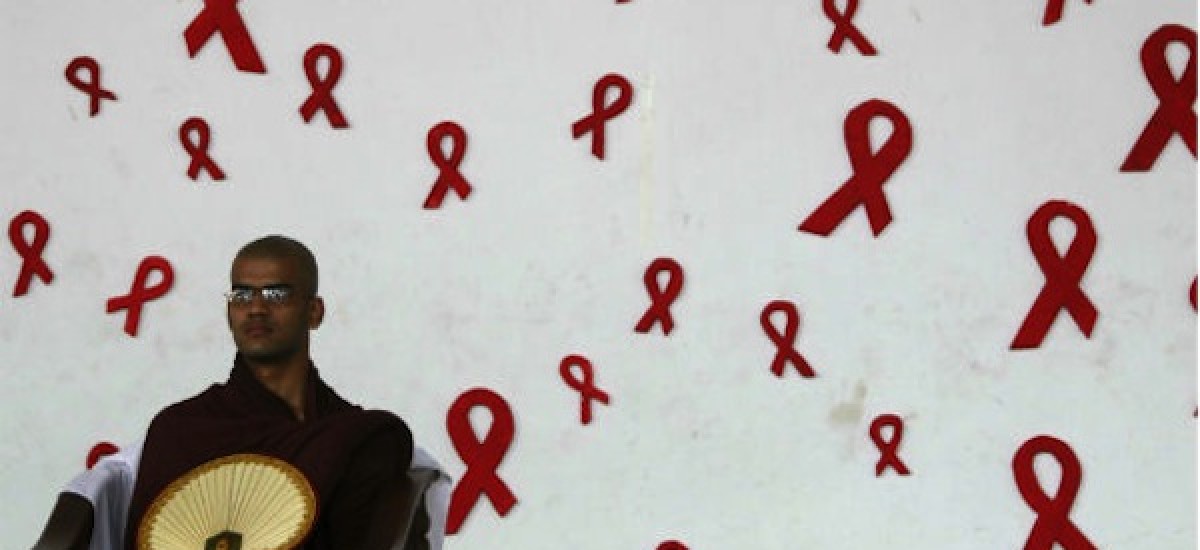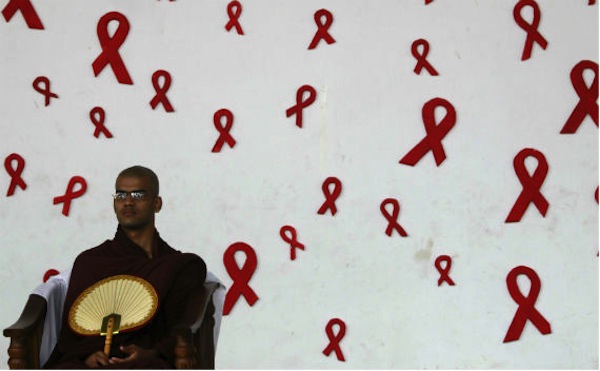Photo by Dinuka Liyanawatte/Reuters, courtesy Council on Foreign Relations blog
2012: A man dies of AIDS in prison. A magistrate orders all 220 inmates that shared his ward to get tested.
2011: The National HIV/AIDS Policy was passed by parliament. Article 3.6 of the policy states that – “The Government of Sri Lanka promotes voluntary confidential counseling and testing, recognizing that mandatory testing would drive those at high risk of HIV infection beyond reach and prevent their access to public health preventive activities and other health services”
Now, apparently the magistrate has no idea of this groundbreaking policy in the region – even India with their significant HIV burden still sit on their HIV Bill that was drafted in 2006.
Yet, as we unpack this, should our concern be the magistrate’s ignorance of a relatively new policy or his apparent ignorance with regards to HIV transmission? In all fairness, he is treating this as he would any other communicable disease. And why shouldn’t he? 220 inmates that shared, what can only be described as an intimate space with the man who died of AIDS, in an overcrowded ward, must be at risk from infection.
In fact, perhaps the magistrate has taken an informed decision here.
It is whispered that the man who died of AIDS was imprisoned on a drug charge. If the man was injecting drugs, and sharing his needle and syringe, then the chances of HIV spreading are significant. But of course it is impossible to procure drugs in prison, so that can’t be it. Also, most of us in the HIV industry here don’t like to admit that people inject drugs in Sri Lanka. It’s an isolated practice. There is no evidence. The track marks on arms and legs of the drug users we meet – Grassrooted has begun documenting human rights abuses of people who use drugs, a strange and arcane practice, for people who use drugs have given up their rights by choosing to exercise what they believe to be their inalienable right to get high – suggest that terms like ‘isolated’ are comforting but not accurate. The fact that there is no evidence however is true. For there to be evidence, evidence must be gathered.
So, if the magistrate perceived the man who died of AIDS as an injector of drugs, then his decision to get the others tested is justified, yes? Is it also then an admission to the fact that drugs are available and used within the prison system in Sri Lanka? But then, UNODC’s interventions with the prison system already suggest that we know and understand how drugs in prisons work. Where do get the drugs from? The needles and syringes? If they only chase the dragon (inhale drugs) then how would HIV be transmitted?
Was the man who died of AIDS thought to be gay, or at the very least a circumstantial bisexual? The National STD AIDS Control Programme (NSACP) does conduct HIV awareness sessions within prisons too. They must talk about anal sex – why wouldn’t they? But all they can advocate for is abstinence, as the prison authorities cannot distribute condoms to inmates. That would mean more jail time: Section 365A of the Sri Lankan Penal Code states that a man who has sex with another man is a criminal. It’s against the order of nature you see… but then so is anal sex and oral sex between heterosexual couples, for the order of nature surely demands that penises must enter vaginas and with resulting offspring. But the question here is whether the magistrate thought the man who died of AIDS must have had sex with one or more of the 220 intimates… is circumstantial bisexuality a reality in prison? Would the distribution of condoms not be the most sensible step? But why promote such carnal acts in a genteel culture such as ours?
Section 3.9 on Prevention and Control of Sexually Transmitted Infections of our National Policy states: “Preventive, educational, and clinical services will be provided to those believed to be at high risk, including sex workers, men having sex with men and injecting drug users.”
But apparently not if you’re in prison.
Why did the magistrate want to test the 220 intimates?
What would’ve happened if they do found that one or more or some are HIV positive?
Here’s what we know happened to the man who died of AIDS… he was HIV positive, and on antiretroviral treatment (ART), under the care of NSACP from 2008. In 2011 he went missing (prison). Now, as he was on life saving/changing drugs he knew that he can’t stop these life saving/changing drugs. Anyone who’s seen the musical RENT (set in the 90s when ART first started saving lives) knows that these drugs have to be taken every day at a prescribed time for the rest of your life. You stop, you can die. Adherence counseling – helping people understand the ‘you stop, you die’ principle of ART – is crucial for any well run programme. And here’s the thing, Sri Lanka’s ART programme is well run. People living with HIV know what it means to begin and stay on ART. So then, why didn’t this man disclose his status to the prison authorities and tell them that he needed his life saving drugs?
Did he want to commit suicide? A death wish? Or was he just too afraid that people will be too afraid of him? We will sadly never know the answer. But a man has died of AIDS in an age when HIV is a chronic and manageable condition, and life saving drugs are made available free from the government.
So what happens to the intimates who test HIV+? What kind of care and support is in place in prison? Would drugs be made available? Would their status remain confidential? Who would be allowed to know?
All these questions are now moot. Apparently none of the 220 intimates have HIV. But they didn’t say HIV, they said AIDS, because AIDS is what people know and fear. So, in the end the man who died of AIDS appears to have only reinforced the equation HIV=AIDS=DEATH. In our experience these last three years, this is the basis of Jo Public’s knowledge on HIV. The effects of a deterrent approaches to HIV – scare penises into condoms. It didn’t work. Penises don’t go seeking condoms. The morning after pill is the popular choice. But that’s another discussion.
Another question for now, however, is whether each of the 220 intimates had an opportunity to receive pre and post test counseling, as per the guidelines laid out in our National Policy. Pre test counseling is the first step in the continuum of care, where people begin their understanding of what it means to receive a HIV+ result; it is where they take the first step in not fearing what they once thought to be a death sentence.
Fact: The People Living with HIV Stigma Index (2010) for Sri Lanka indicated that 55% of respondents were tested without their knowledge and over 70% received only post test counseling.
Today, now, we need to seriously review our piecemeal strategies with regards to HIV if Sri Lanka is to remain low prevalent, and if people already living with HIV are to continue living with it – normal lives, real lives, contributing lives, enjoyable lives.
1987: Sri Lanka’s first AIDS case is identified. He died soon after. How far have we travelled since then?


